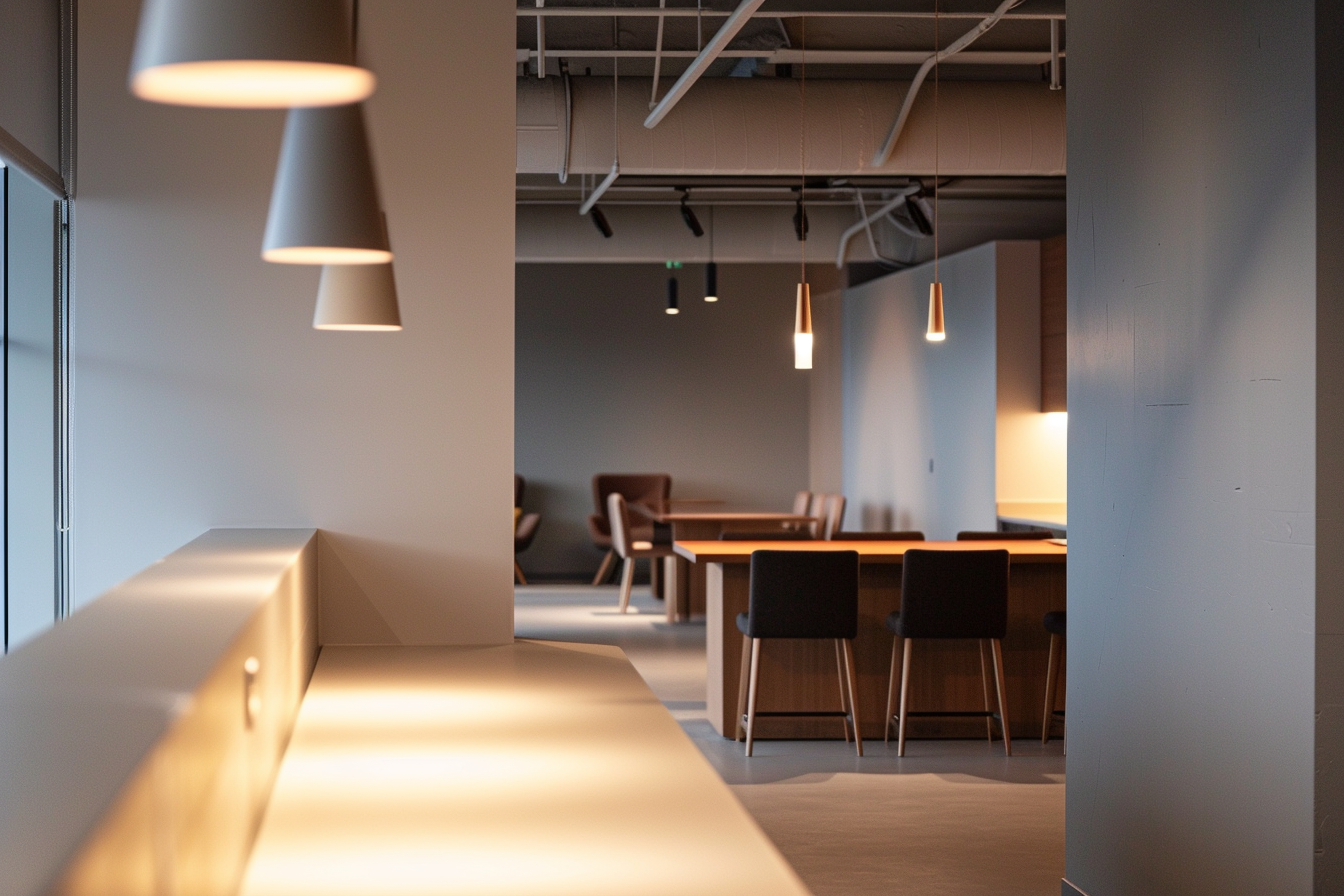Lighting Design Fundamentals

1. Introduction
Lighting plays a critical role in shaping interior environments. It influences visual comfort, spatial perception, mood, functionality, and even energy consumption. Understanding lighting design fundamentals is essential for architects, especially recent graduates transitioning from academia to professional practice. This article explores the principles of lighting design, differentiates between natural and artificial lighting strategies, examines real-world applications, and provides guidance for context-sensitive implementation. The aim is to equip new professionals with a practical framework they can apply immediately in their work.
2. The Role of Lighting in Interior Architecture Lighting is more than visibility. It enhances the character of a space, draws attention to focal elements, defines circulation paths, and supports occupant well-being. Key Functions:
- Task lighting – Supports activities such as reading, cooking, or working
- Ambient lighting – Provides overall illumination and mood
- Accent lighting – Highlights artworks, textures, or architectural features
- Decorative lighting – Adds aesthetic value, often becoming a visual feature
Pro Tip: Layer lighting types to ensure flexibility throughout the day and across functions. Layering enhances spatial dynamics and energy efficiency.
3. Natural Lighting Strategies Natural light (daylighting) offers benefits in terms of energy reduction, circadian rhythm support, and spatial vibrancy.
Key Techniques:
- Orientation – Aligning buildings for optimal sun exposure
- Windows and openings – Properly sized and placed fenestration
- Clerestory and skylights – Bringing daylight into deep interior zones
- Light shelves – Reflecting daylight deeper into rooms
- Glazing types – Controlling heat gain and glare
Pro Tip: In warm climates, prioritize shaded south-facing openings and consider high-performance glazing to reduce solar heat gain.
4. Artificial Lighting Strategies Artificial lighting supplements or replaces daylight, especially at night or in internal rooms.
Lighting Types:
- Incandescent (obsolete in many countries due to inefficiency)
- Halogen – Improved but still heat-intensive
- Fluorescent – Common in offices and commercial spaces
- LED – Energy-efficient, long-lasting, available in many color temperatures
Color Temperature:
- Warm white (2700–3000K) – Suitable for residential, hospitality
- Neutral white (3500–4100K) – Offices and general workspaces
- Cool white (5000–6500K) – Industrial, healthcare
Pro Tip: Choose color temperature based on function and mood. Warm tones create intimacy; cooler tones boost alertness.
5. Lighting Controls and Smart Systems Automation in lighting allows flexibility, comfort, and energy savings. Common Control Systems:
- Manual dimmers – User-controlled brightness
- Occupancy sensors – Turn lights on/off based on movement
- Daylight sensors – Adjust brightness depending on daylight levels
- Smart lighting systems – Controlled via apps or AI-based sensors
Benefits:
- Energy savings
- Increased user comfort
- Maintenance reduction
Pro Tip: In multi-use spaces like meeting rooms or classrooms, install scene-based presets to adapt lighting instantly to different uses.
6. Integrating Lighting with Materials and Surfaces The effectiveness of lighting depends heavily on surrounding materials. Reflective surfaces amplify light, while matte or dark finishes absorb it.
Consider:
- Ceiling height and reflectance
- Wall finishes (glossy vs matte)
- Furniture placement
- Material textures
Case Study 1: The Louis Vuitton Foundation, Paris
Designed by Frank Gehry, the interior uses white walls, curved glass, and polished stone floors to reflect light naturally. Skylights and translucent canopies diffuse daylight, minimizing glare while enhancing spatial drama.
7. Climate and Context-Based Considerations Lighting design must respond to regional and cultural contexts.
Climate Factors:
- In tropical climates, focus on glare control and heat gain prevention
- In cold climates, maximize sunlight to aid heating and morale
- In urban settings, manage external light pollution and building shadows
- In rural settings, preserve dark skies while meeting functional needs
Case Study 2: Therme Vals, Switzerland
Designed by Peter Zumthor, this spa uses narrow vertical window slits that frame mountain views while controlling natural light. Interior materials—quartzite and dark stone—absorb and contrast with the daylight for a calm ambiance.
8. Maintenance, Sustainability, and Compliance Good lighting design must consider maintenance cycles, long-term energy use, and regulatory compliance.
Practical Concerns:
- Replaceable parts – Choose accessible lighting fixtures
- Energy codes – Comply with standards like ASHRAE 90.1, LEED, WELL
- Luminance limits – Avoid over-lighting and visual discomfort
- Fixture durability – Consider moisture, dust, and vandal resistance
Pro Tip: Select modular systems in commercial projects—maintenance becomes easier, cheaper, and more sustainable over time.
9. Conclusion Lighting is not just an accessory—it’s a foundational element of interior design. A successful lighting strategy balances natural and artificial sources, adapts to the needs of users, responds to context, and ensures energy efficiency and visual comfort. Recent graduates should approach lighting design not as an afterthought, but as an integral part of spatial planning. By understanding the tools, materials, and technologies available—and learning from precedent—they can deliver interiors that are not only beautiful but intelligent and sustainable.
Recommended Resources:
- IES Lighting Handbook (Illuminating Engineering Society)
- WELL Building Standard v2 – Light Concept
- ASHRAE 90.1 – Energy Standard for Buildings
- "Lighting for Interior Design" by Malcolm Innes